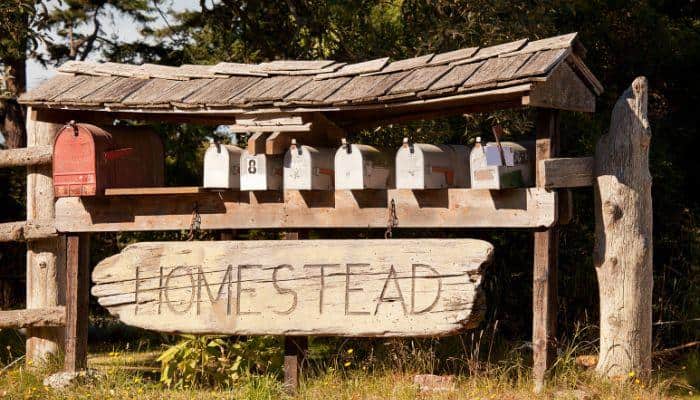Table of Contents
What is Modern Homesteading?
Modern homesteading is a lifestyle that emphasizes self-sufficiency, sustainability and independence.
It involves living off the land and relying on your own resources to meet the needs of your family. Homesteaders strive to reduce their dependence on external systems and embrace traditional skills that have been passed down through generations.
When people think of it, they usually imagine images of vast farms and landscapes, however modern homesteading is adaptable and can be practiced on various scales, from rural properties to suburban homes with limited space.
Homesteaders focus on growing their food, raising animals and making use of renewable resources.
They also use practices such as composting, rainwater harvesting and alternative energy sources to minimize their environmental impact. Embracing a DIY mindset, modern homesteaders often build and repair their structures, craft tools, and create sustainable solutions for daily living.
You don't need to be a farmer or own a farm

Contrary to popular belief, homesteading does not require vast acres of farmland or extensive agricultural knowledge.
Modern homesteading can be practiced even in urban or suburban settings with limited space. For those in cities, container gardening, rooftop gardens and community plots offer opportunities to grow fruits, vegetables and herbs.
Micro livestock, such as chickens or rabbits, can be raised in small backyard spaces as well.
Homesteaders often maximize the use of their available land by implementing vertical gardening techniques and using every inch for productive purposes.
Window boxes, hanging planters and vertical trellises can support a variety of crops, making the most of limited space.
The key is to start small and gradually expand as you gain experience and confidence in your homesteading skills.
How to Get Started Homesteading
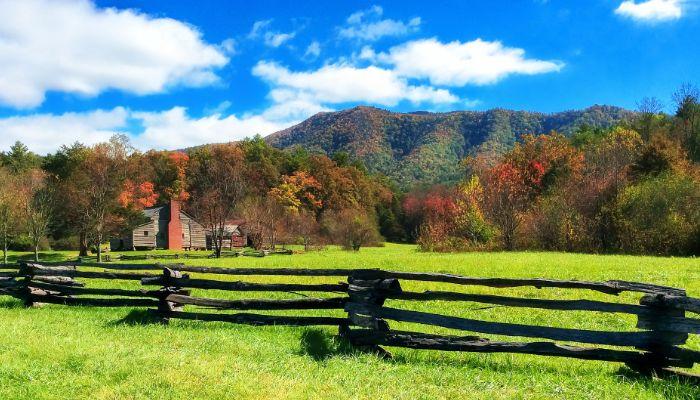
Getting started with homesteading requires a combination of planning, knowledge and practical skills.
Here are some steps to help you begin your homesteading journey:
Educate Yourself
Take the time to learn about gardening, livestock care, food preservation, and other essential homesteading skills. Books, online resources, workshops, and local farming communities can be valuable sources of information.
Start with Simple Projects
Begin with manageable projects that align with your interests and available space. A small vegetable garden, herb bed, or a few potted plants are excellent starting points. As you gain confidence and experience, you can expand to more ambitious projects.
Create a Homesteading Plan
Outline your goals and objectives for homesteading. Consider what you want to produce, the resources you’ll need, and how much time you can dedicate to your homestead. A well-thought-out plan will help you stay organized and focused on your homesteading journey.
Gather Essential Supplies
Equip yourself with basic gardening tools, seeds, and materials for DIY projects. Start collecting supplies for food preservation, such as canning jars and dehydrators, as well as materials for raising livestock, if you plan to do so.
1. Why do you want to start Homesteading?
Understanding your motivations for homesteading will guide your choices and priorities.
Some common reasons preppers pursue a homesteading lifestyle include:
- Self-Sufficiency: Desire to rely less on external systems and gain independence by producing food and resources on your own.
- Sustainability: A commitment to living in harmony with nature, minimizing waste, and reducing the carbon footprint.
- Food Security: Concerns about food availability and quality, and the desire to have control over the source of the food consumed.
- Financial Freedom: Homesteading can lead to cost savings on groceries and utilities, providing a path to financial independence.
- Personal Fulfillment: Homesteading offers a rewarding and fulfilling way of life, fostering a deeper connection to the land and a sense of accomplishment.
2. What's your starting Budget?
Homesteading can be both rewarding and economically viable, but it’s essential to determine your starting budget to plan effectively.
Your long term goal is to rely less and less on money over time and become more financially independent.
Consider the initial expenses for seeds, tools, livestock, infrastructure and any necessary improvements to your property.
Factor in ongoing costs, such as feed for animals, water supply and potential energy requirements. Evaluating your budget will help you prioritize your projects and allocate resources wisely.
3. Determine if Your Current Location is Suitable

Assessing the suitability of your current location is crucial for successful homesteading. Factors to consider include climate, soil quality, water availability, local regulations, and the amount of sunlight your property receives. Researching the agricultural zone and microclimates in your area will aid in selecting appropriate crops and livestock for your homestead.
Climate Considerations
Understanding your region’s climate is fundamental for planning your homestead.
Consider the average temperatures throughout the year, as well as the length of growing seasons.
If you live in an area with harsh winters, you may need to focus on cold tolerant crops and provide proper insulation and shelter for your livestock.
On the other hand, if you reside in a hot and arid region, water conservation strategies and drought-tolerant crops will be better choices.
Soil Quality and Composition
The quality of your soil directly impacts the productivity of your garden and the health of your livestock. Conduct soil tests to determine its pH level and nutrient content.
Depending on the results, you may need to add fertilizer or specific nutrients to allow for your crops to grow and have a fighting chance.
Water Availability and Sources
Access to reliable water sources is critical for any successful homestead.
Assess your property’s water supply, including well water, springs, ponds or nearby streams.
If your property lacks a sufficient water source, consider rainwater harvesting systems or methods for water conservation, such as mulching and drip irrigation. Planning for adequate water storage will be crucial during dry spells or emergencies.
Pay attention to any natural slopes or drainage patterns that could affect the management of water on your property.
4. Raising Livestock

Raising livestock is a significant aspect of many homesteading practices. Chickens, rabbits, goats and other small livestock can provide valuable resources such as eggs, meat, and milk.
However, raising animals requires careful planning and commitment. Be sure to have appropriate shelter, fencing and feed for the animals and be prepared to provide proper care and attention to their well-being.
Selecting Livestock Suited to Your Homestead
When choosing which livestock to raise, consider your homestead’s size, available space and the local laws.
Smaller homesteads will find chickens and rabbits to be a practical starting point, as they require less space and maintenance.
If you have a few acres, consider larger animals like goats, sheep, or even cattle. Think about the climate and how well specific breeds can adapt to your region’s weather conditions.
Providing Adequate Shelter and Pasture
Proper shelter is essential for the well-being of your livestock.
Design and build sturdy, weather-resistant structures like barns that protect your animals from harsh weather conditions, predators and excessive heat or cold.
Ensure the shelters have adequate ventilation and are easy to clean. Livestock also require access to clean and decently sized pasture for grazing.
Nutrition and Feeding
Meeting the nutritional needs of your livestock is vital for their health and productivity.
Provide a balanced diet that includes a mix of fresh forage, hay, grains and mineral supplements.
Give them access to clean water at all times and if you can and have the space for it, grow some of the feed on your property to reduce costs and increase self-sufficiency.
Watch over your animals regularly to make sure they are in good condition and make adjustments to their diet if necessary.
Health Care and Veterinary Support
Maintaining the health of your livestock is a top priority.
Setup a vaccination and deworming schedule to prevent disease outbreaks. Be familiar with the common health issues of the specific livestock you raise and seek veterinary support when needed.
Regularly inspect your animals for any signs of illness or injury, and provide appropriate medical attention promptly.
Breeding
If you plan on breeding your livestock, educate yourself about the breeding cycle of the animals you raise.
Manage the breeding yourself to be sure you have healthy offspring and prevent overpopulation on your homestead.

Managing Livestock Waste
Livestock produce manure, which can be a valuable resource for composting and fertilizing your garden.
Implement a system to collect and manage livestock waste efficiently. Composting the manure not only reduces waste but also creates nutrient-rich compost that nourishes your plants.
5. Sourcing Water and Creating Irrigation Systems
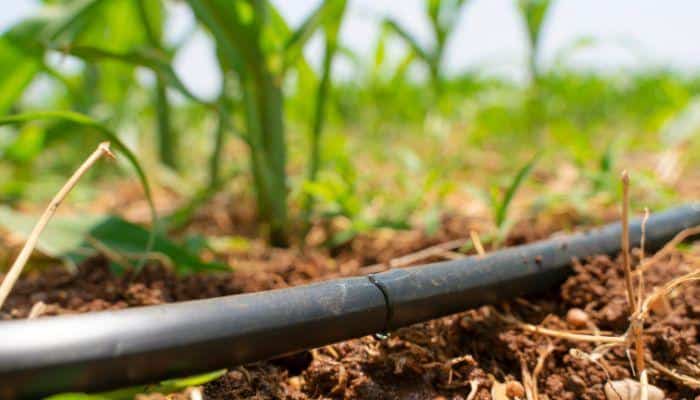
Access to water and the ability to store it for emergencies is important for any homestead.
Creating efficient irrigation systems, such as drip irrigation or soaker hoses, will conserve water and enhance the productivity of your garden.
Rainwater Harvesting
Rainwater harvesting is a reliable method to collect and store rainwater for later use. Install rain barrels or large cisterns to capture rainwater runoff from your roof or other surfaces.
The collected rainwater can then be used for watering your garden and caring for livestock.
Wells and Groundwater
If your property has access to groundwater, consider drilling a well.
Wells provide a steady supply of water for your homestead, especially during dry seasons or in areas where rainwater harvesting may not be sufficient.
Before drilling a well, check your local laws and have the water tested for quality and safety.
Irrigation Systems
Creating efficient irrigation systems is important for optimizing water usage on your homestead.
Drip irrigation and soaker hoses are excellent options to minimize water waste and ensure that water reaches the root zones of plants.
Installing timers on irrigation systems allows for precise control of watering schedules, ensuring plants receive adequate hydration while conserving water.

Greywater Recycling
Using greywater recycling gives you an extra source of water most people don’t typically think of.
Greywater includes used water from sinks, showers and washing machines, which can be filtered and reused for non-potable purposes such as garden irrigation.
Pond and Swale Systems
Creating ponds and swales can help manage water runoff and retain water on your property.
Swales are shallow, ditches or depressions that capture and direct water similar to how a river does, while ponds serve as storage for excess water. Both systems prevent erosion, improve soil moisture, and provide habitat for beneficial wildlife.
6. DIY Construction and Tools
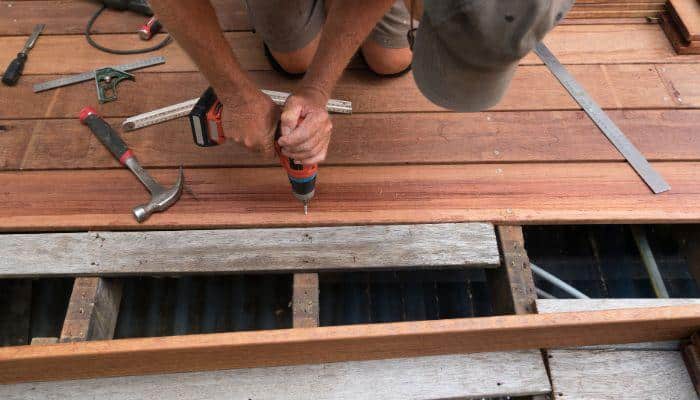
Embracing a do-it-yourself (DIY) approach is at the heart of homesteading for preppers.
Using self taught or learned construction skills and utilizing the right tools allows you to create and maintain the structures and equipment needed for your self-sufficient lifestyle.
From building animal shelters to crafting garden beds and making homestead repairs, here are some key aspects of DIY construction and essential tools for your homestead:
Building Animal Shelters
Constructing sturdy and weather-resistant animal shelters is vital for providing your livestock with a safe and comfortable living space.
Use durable materials such as wood, metal, or recycled materials to build coops, barns and shelters that can withstand the weather.
DIY animal shelters not only save costs but also allow for customization to meet the specific needs of your livestock.
Crafting Garden Beds and Raised Planters
Raised garden beds are a popular choice for growing vegetables and herbs.
They offer better drainage, warmer soil temperatures, and easier access. Build raised planters using untreated lumber or other materials safe for growing food.
Think about vertically and also different shapes and sizes to fit your available space. Raised planters also reduce the risk of soil compaction and make gardening more accessible.
Homestead Infrastructure and Repairs
Maintaining the infrastructure of your homestead is an ongoing task.
Learning basic carpentry skills and having essential tools such as hammers, saws, screwdrivers and levels are invaluable for repairing fences, gates and other structures.
Regularly inspect and maintain buildings and equipment to prevent costly repairs.
Hand Tools for Gardening and Landscaping
Buying a collection of hand tools is important for farming, gardening and landscaping tasks.
Shovels, spades, garden forks and hoes are indispensable for preparing soil, planting and maintaining crops.
Pruning shears and loppers help manage fruit trees and bushes, while hand saws are useful for cutting branches and smaller wood pieces.
Having a wheelbarrow or garden cart makes transporting soil, mulch and harvested crops a lot easier as well.
Power Tools for Homesteading Projects
While hand tools are needed, power tools can significantly increase productivity and speed on the homestead. Remember, homesteading is pretty much a full time job!
A cordless drill is versatile and needed for various tasks, such as building structures and assembling DIY projects.
Circular and reciprocating saws are handy for cutting lumber and other materials. Chainsaws are useful for processing lumber or handling large tree limbs.
Woodworking and Crafting Skills
Learning woodworking skills allows you to create custom pieces for your homestead.
From building furniture to crafting decorative items, woodworking adds a personal touch to your self-sufficient lifestyle.
Invest in a reliable set of chisels, a hand plane and a coping saw to start your woodworking journey. As your skills grow, you can explore more complex projects to meet specific needs on your homestead.
7. Farming and Gardening
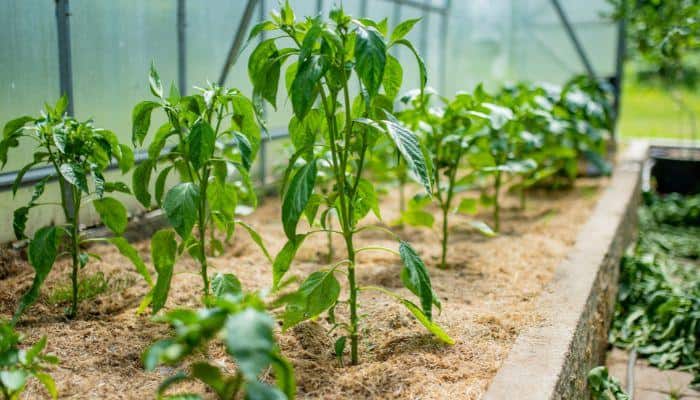
Farming and Gardening are fundamental components of homesteading for preppers, providing a steady supply of fresh, homegrown produce to sustain you and your family.
From cultivating vegetables and fruits to growing staple crops, farming contributes to your self-sufficiency and food security.
Here are key aspects to consider when farming and gardening in your homestead:
Crop Selection and Planning
Choose crops that are well-suited to your climate and growing conditions.
Research the ideal planting times, required care and potential yields of various crops. Consider planting a mix of vegetables, fruits and grains to diversify your food sources and extend your harvest throughout the year.
Crop rotation is where you change the planting location of crops each season, helps prevent soil depletion and pest infestations.
Composting and Soil Fertility
Composting is a practice for enriching your soil and promoting healthy plant growth.
Collect kitchen scraps, yard waste and livestock manure to create nutrient-rich compost. Apply compost to your garden beds regularly to replenish soil fertility and allow for water retention.
Also consider using cover crops, like legumes or clover, to improve soil structure and fix nitrogen levels in the soil.
Pest and Disease Management
Maintaining a healthy balance between pest management and preserving beneficial insects is important for gardening and farming.
Use natural methods, such as companion planting and crop rotation, to reduce the likelihood of pest infestations.
Regularly inspect your crops for signs of disease or pests and take appropriate action, such as removing affected plants or using organic pest control methods.
Seed Saving and Heirloom Varieties
Save seeds from your best-performing crops to replant in the next season. Seed saving not only preserves heirloom varieties but also saves money and ensures that your crops adapt to your specific growing conditions over time.
Heirloom varieties often offer unique flavors and characteristics, adding diversity to your homegrown produce.
Johnny’s Seeds offers an excellent selection of heirloom seeds to get started.
Permaculture
Design your garden and landscape to mimic natural ecosystems, maximizing efficiency and minimizing waste.
The practice of permaculture highlights the importance of observing and working with nature to create resilient and productive agricultural systems.
Food Preservation
As your harvest comes in abundance, food preservation becomes vital to ensure you have a steady supply of homegrown food throughout the year.
Techniques such as canning, dehydrating, fermenting and freezing allow you to store surplus produce for later use.
8. Have Storage Structures

Having proper storage structures on your homestead will let you preserve your hard-earned harvest and resources.
From canned goods and root vegetables to firewood and tools, well-designed storage solutions help maintain the quality and longevity of your supplies.
Consider building or using these:
- Root Cellars
- Pantries and Storage Shelves
- Freezers and Refrigerators
- Firewood Storage
- Tool Sheds and Workspaces
- Livestock Feed Storage
9. Assign Family Roles

Homesteading is a team effort and for the most part a full time job if doing it on a large scale.
Assigning roles and responsibilities to family members can streamline tasks and make the most of everyone’s skills.
Begin by identifying each family member’s unique skills, interests and strengths. Some may have green thumbs and enjoy gardening, while others may excel in animal care or construction projects.
By understanding each person’s abilities and preferences, you can allocate tasks that align with their expertise and passion.
Divide the responsibilities based on the workload and time commitment required for each task. Rotate tasks occasionally to prevent burnout and provide opportunities for family members to learn and participate in various aspects of homesteading.
Involve children in age-appropriate activities to instill a sense of responsibility and teach valuable life skills.
10. Become Completley Self-Sufficient

In homesteading, self-sufficiency is the primary goal. Strive to produce as much of your food and resources as possible, reducing reliance on outside sources like grocery stores.
Explore alternative energy solutions, such as solar panels or wind turbines, to power your homestead.
Practice resource recycling and upcycling to make the most of available materials. Reuse and repurpose items whenever possible, reducing waste and minimizing the need to purchase new products.
Learn about natural remedies and herbal medicine. Cultivate medicinal herbs and plants on your homestead to help with common health issues and minor ailments. A well-stocked herbal medicine cabinet can be a valuable resource, especially in situations where access to traditional medical care may be limited.
Learn about gardening, animal husbandry, food preservation, carpentry and other homesteading skills. Encourage knowledge sharing among family members and your homesteading community to build a collective pool of expertise.
Homesteading for preppers offers a path to self-sufficiency, sustainability, and resilience.
Embrace the principles of modern homesteading, and gradually build your skills and resources to create a self-sustaining homestead that aligns with your goals and values.
From growing your food to raising livestock and mastering DIY projects, the homesteading lifestyle lets us preppers take control of our lives and thrive in any situation.
Whether you have a vast plot of land or a small urban garden, homesteading offers a unique approach towards self-reliance and preparedness.


